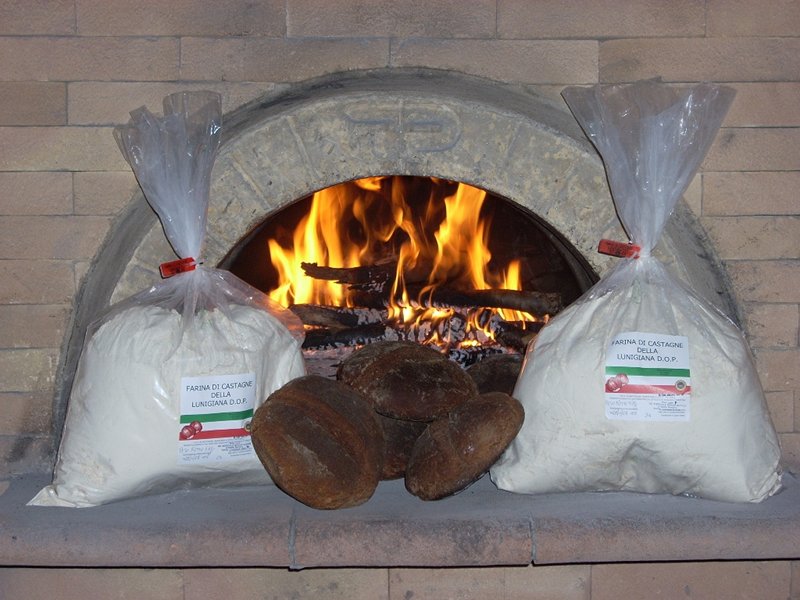Lunigiana chestnut flour obtained in January 2006 the Protected Designation of Origin "Farina di castagne della Lunigiana" (Lunigiana Chestnut Flour).
The territorial features of Lunigiana, the chestnut variety, the drying and milling processes carried out according to ancient techniques, make flour an excellent product for its sweetness and taste.
Already in the year 1400, Antonio Eoie in his writings used to call the chestnut flour "Pan di Lunigiana" (Lunigiana bread). As in the past, today chestnut flour gives the opportunity to prepare extraordinarily tasty dishes like the so-called "le pattone", cooked in chestnut leaves inside terracotta "testi", pancakes you can eat with sheep's milk cheese and local cold cuts, the so-called "castagnaccio", "lasagnette bastarde", and sweet polenta.
The Community PDO label is synonym of product quality, since it certifies the respect of an ancient production chain starting from the care of chestnut groves, with collection and selection of the best local chestnut varieties (Bresciana, Carpanese, Fosetta, Marzolina, Moretta, Primaticcia, Rigola, Rossella, Rossola out of which the varieties Bresciana, Carpanese, and Rossola must reach at least the 70%), through the recovery of the traditional slow drying method in the ancient stone-built drying houses (the so-called "gradili") and the milling obtained with millstones. And it is precisely thanks to the respect of this production method, as well as to the devotion to work and the passion for the rediscovery of the local traditions and the link to the territory, that the chestnut flour PDO is today a unique product for its top quality, its sweet taste with an intense chestnut fragrance, the "talc" consistency with a cream-ivory color giving it a great versatility starting from its use in cooking.
Lunigiana chestnut flour PDO is sold starting from 15th November of every year. At the moment of the beginning of the sale, Lunigiana Chestnut Flour must have the following requirements: maximum humidity 8%; velvety to the touch and fine to the palate; granulometry inferior or equal to 0.8 mm, of which at least 80% inferior or equal to 0.3 mm; color varying from white to ivory; sweet taste; total sugar content not inferior to 20%; chestnut fragrance, lack of smell of mould or stale.
The promotion Committee for the PDO formed in the late 2004, and today is formed by 15 members that are the main producers of PDO flour. Among the founders of the Committee there are the Park Visitor Center, Montagna Verde Holiday Farm with its well-preserved chestnut groves/gardens, and the Farmstead 'Borgo Antico di Apella'.
The production area of Lunigiana Chestnut Flour PDO lies in the province of Massa Carrara and includes the whole administrative territory of the Municipalities of: Aulla, Bagnone, Casola in Lunigiana, Comano, Filattiera, Fivizzano, Fosdinovo, Licciana Nardi, Mulazzo, Podenzana, Pontremoli, Tresana, Villafranca in Lunigiana, and Zeri. Therefore, the production area is formed by a unique body and entirely lies in the territory of Lunigiana Mountain Community.
Needless to say, the best way to taste chestnut flour is to taste the dishes suggested by the characteristic holiday farms and restaurants of Lunigiana, where often flour is one of the ingredients coming from the surrounding area, which are reappraised also in recipes combining tradition with innovation to conquer also new generations.











